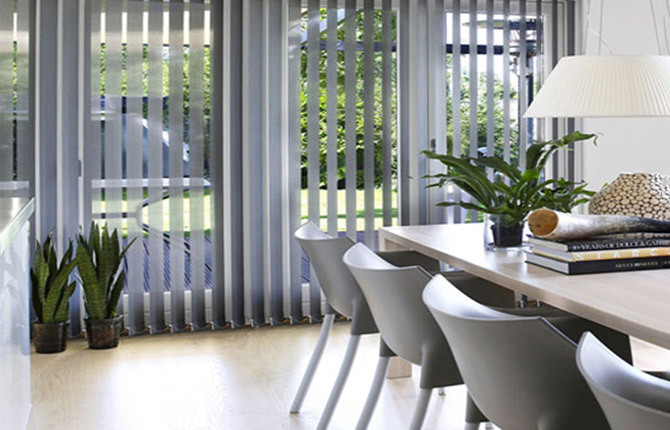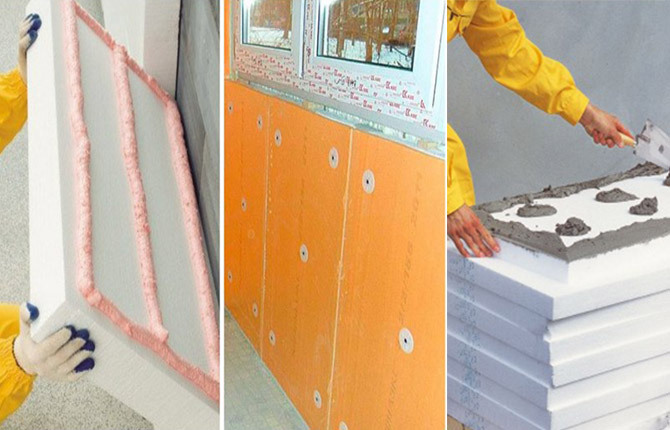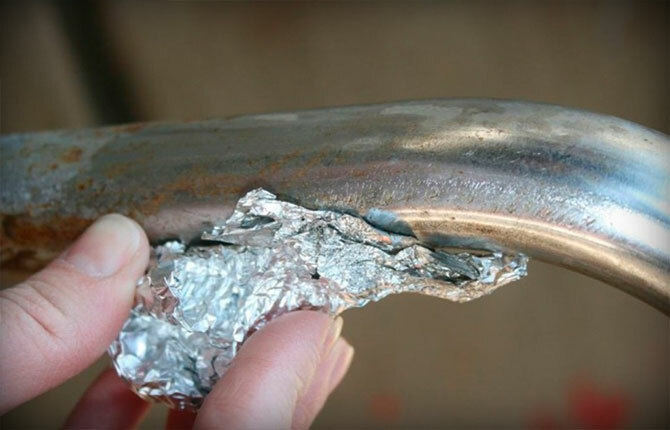Composting toilet - so called construction designed to meet the natural physiological needs. Bio-toilet is slightly different from the usual home bathrooms. Structures of this kind are in demand for use in a temporary accommodation of people. For example, on the plot.
Arrange a comfortable composting toilet to give their own hands could any handyman, able to handle some simple carpentry tools. Therefore, its manufacturing technology is of interest to many owners of the hacienda.
Before proceeding to action, it is necessary to study the theoretical aspects of construction technology, right? All the necessary information is set out in detail in the article.
We have described how the works and bio-closet, what materials are needed to build and lead step by step instructions for the production and arrangement of suburban toilets.
The content of the article:
- Design and function biotoilet
-
How to do your own composting toilet?
- Materials, tools, dimensions
- Build housing recovery
- Free accessories and supplies
- Additional facilities in the area
- Conclusions and useful videos on the topic
Design and function biotoilet
This type of toilet is characterized by a simple but interesting content processing technology. The disposal of fecal waste is exclusively natural way. In this processing to enhance the natural process (recycling) of used organic materials, such such as sawdust or peat.
Often with these substances is additionally used microflora created artificially. actively apply bioenzimy - substances derived from the vital activity of certain types of bacteria.

Here is the simplest design composting toilets, made with his own hands. Installation is located directly at the infield area in the smallest occupancy
It is advisable to choose a place where the minimum drafts and protection from direct sunlight. Then user comfort will be comparable with the comfort of home toilets.
Before we get acquainted with the production of and learn how better to do with their hands biotoilet technology, it is recommended to fully understand the essence of the operation of the device.
BUT The essence of the dry closet following:
- User defecate.
- its waste product falls asleep with peat.
- Aerobic bacteria activate the composting process.
- The resulting compost ripen for some time.
Finally fully ripe (decomposed) compost is a component rich in organic substances, which are easily assimilated by plants. Output for summer resident obvious: this product - an effective fertilizer for all types of vegetation subsistence farming.
Meanwhile, the toilets do not appear only in the suburban areas and on farms private country houses. There are examples of successful use of cell structures of this kind, which introduce long-distance transport.
Railway trains and planes have long been equipped with portable toilets. And yet the same kind of structures, slightly modernized, appeared on the sea yachts.

Related design of the recovery of waste resulting from natural human needs. From this natural biotoilet characterized by using as an activator processing chemicals. For use in such a device giving suitable, but the economic benefit from it will not
Considering hand made of peat toilets and alternative industrial options, we note the important caveat. Along with such structures, there are other kinds of "composting toilets", who work exclusively on the principle of chemical processing of the content.
Both of the devices are similar to external performance, but the compost produced by chemical "outhouse" in principle can not be equated with a natural fertilizer.
Comparative review of the principles of composting toilets various actions listed in this article.
The advantages of a peat-type cottage toilet include:
image gallery
Photo of

Peat toilet - a practical kind of plumbing to cottages. This is the easiest way to arrange temporary accommodation

The construction of elementary and fast to assemble, requires no connection to the water supply and sewerage

Peat toilet thoroughly laid out ergonomically and anatomical aspects. The use is similar to the urban toilet

For processing caught in a bio-toilet waste is enough to add to the tank filling in the required amount

The filler is poured into the upper part of the housing, which is located on the bottom of the spreader. He peat evenly distributed, entering the collecting tank equal portions

Gases given off during the processing of waste in the toilet tank, are discharged through the vent pipe. Gas enters it has no negative odor

Constructive parts peat toilets are connected to each other hermetically. At the same time the device can be easily disassembled for emptying and sanitary processing

For the condensate formed on the walls between the host device and the housing capacity in waste management, to the nozzle located at the bottom of the drain hose is connected

Ease of design and ease of transport

Preparing to use the toilet

Simplicity and comfort in use

Filler for recycling waste products

Design peat spreader

Ventilation pipe suburban toilet

Tightly joined parts of the device

Connecting the drain hose to the fitting
How to do your own composting toilet?
This simple construction with the device considering its time of operation can be divided into two possible structures:
- The design of the street without a house.
- The design of the street from the house.
There are lots of recommendations on the use of the network device utilization of peat directly inside the house. But this approach is unlikely to suit people are too sensitive to smells.
image gallery
Photo of

Due to the specificity of treatment and composting toilets content rate need not be installed in a separate house. Simply select and arrange a suitable room in the cottage

In a separate toilet with a bio-plumbing is not necessary to arrange a cesspool or put a storage tank. Therefore, the foundation can serve as a solid w / w cooker

For partial penetration suburban toilet tank can be built wooden plinth serving as a support structure for the storage capacitance,

For ease of emptying the storage tank can be built compartment into which the contents of the box will just be nominated

The real disadvantage of homemade composting toilets is a complete lack of mechanization processes. Load filler will have to

The device improvised biotoilet permissible to use any container suitable size. The priority of plastic containers, because they are the most resistant to chemical and biological reactions

Increase the level of sanitation thoughtful arrangement of space, good location of the container with peat and related devices

it is desirable to set the box for comfortable use of the villa plumbers that prevent accidental tipping and increase the level of comfortable operation

Location dry closet in the holiday house

Construction of separate facilities

Reason for partial penetration

Dressing house with drawer

Self loading filler in a container

Using a plastic container in construction

Construction of a homemade toilet

box-construction for the toilet bucket in the country
The truth is if you take the professionally made model biotoilets masters, not with his own hands, it is possible to pick up a successful home version. In the summer at their summer cottage optimal location for the natural peat recovery - outdoors.
Version without house manufacturing provides only a toilet seat in a pair with a box for storage peat fillers. This is the easiest design decision of all.
This system is successfully used, for example, at their summer cottage, the area of which is securely closed from prying eyes. biotoilet box set somewhere in a secluded place among the vegetation and use them when needed.

An illustrative example of how you can make a holiday biotulet their own hands, if we apply to this case all their knowledge and skills. But knowledge is easy to get the information space, but the experience is not so simple
Assembling biologically pure WC particular difficulty does not spoil. The process is quite capable even to those who have never held in the hands of the carpenter's tool.
Materials, tools, dimensions
To make their own hands peat bio-toilet, you need the following materials:
- plywood sheets - thickness of 10-12 mm;
- Eaves - 85-110 mm width, 12-15 mm thickness;
- wooden bar - cross section 40 * 40 mm;
- door mid-size loop - 6-10 pcs .;
- Capacity of corrosion-resistant material - volume of 10-12 liters.
The need for working tools:
- hacksaw with fine teeth;
- joiner sharp knife;
- hammer metalwork;
- screwdriver, measuring tape, pencil;
- electric jigsaw;
- hardware (nails, screws, screws).
The most complex stage independent work - cutout round holes of large diameter on the pre-prepared sheet of plywood.
Using a hacksaw veneer sheet cut from such a way as to obtain a panel of dimensions 500 * 500 mm (specific dimensions directly depend on the dimensions of the future user). Then, on the obtained square panel electrical fret saw cut hole diameter of 250-300 mm.
Approximately the workpiece should turn from summer resident, who has decided to make the peat compact composting toilet with his hands:

Structure biotoilet section, inside which (under a cover) is placed container for waste collection. This is the toilet seat on which to place a user. Yet only on the cover does not cut a hole
When you are finished working with sharp, a plywood board carefully sanded with sandpaper. In the first step polishing cloth are large, then continue the finer grind. The task - to obtain a flat smooth surface veneer sheet.
Polishing is enough to execute on only one side, which will act as an external panel seat toilet seat. However, as far as possible it is recommended to process the grinding of each part of the device.

biotoilet section with cover and cut into her hole. The surface of the cover usually carefully sanded, sometimes coated with lacquer layer. Inside the box, just below the opening, is placed container for waste collection
Fully finished product is equipped with more additional cover, which closes the opening.
Continue to prepare a second plywood panel of similar dimensions, but continuous (no holes). She will play the blanking cover. The following should be cut to the size of the board for assembly of the main ducts dry closet. duct length dimension should be taken as approximately the length of two sizes toilet seat (500 * 2 = 1000 mm).
The size adjustment is selected from the calculation of the user a comfortable position when sitting on the toilet seat. For people with different dimensions, this parameter may differ, but on average it is 350-400 mm. By the small side (width) of the rectangle is cut off as the estimated number of boards.
Build housing recovery
Further continuation of the development of the peat dry closet with his own hands - an assembly of wooden rectangular body of the prepared cuttings boards. Overall dimensions of the box, respectively, 1000 * 500 * 350 mm (length, width, height).
Boards fastened to the bars, the last setting of internal corners design. For fixing use nails, screws or screws.
Thus produced is separated within the wooden casing wall. The result is two working sections.
One section is covered by a sheet of plywood previously prepared with a hole and after a continuous veneer lid. Another section (for storage of peat) is covered by a lid, knocked out of boards.
All the cover is mounted on hinges, ensuring in this way their easy opening / closing. It turns out that something like that that's such a product of its own production.

Approximately the assembly should turn from truckers, who venture to collect bio-toilet according to the instructions above. Housing consisting of two separate compartments: one compartment is directly under the toilet mechanism, the second acts as a repository of peat (or sawdust)
At the final stage of the entire wooden structure is treated with antiseptic. This action will prevent the appearance of fungal structures on the surface of the wood.
Also antiseptic protection of structures from various insects. It will only be placed inside one section of the container for collecting garden waste holders, and another section to fill with peat. Homemade friendly composting toilet is ready for use.
Free accessories and supplies
For the convenience of peat samples from the adjacent section is recommended to make a small spatula. Homemade spatula made of wood, but if we ignore the small cost, easier to store to buy a ready-made tool. Plastic spatula that sell retail chains, lightweight, comfortable, but short-lived.

Instead of the traditional wash water technology using bio toilet layman offers an easier way - a dry powder. Button cistern here successfully replaces the conventional scoop, and the role of water takes the peat - practical and economical
Capacity to build the waste can serve as an ordinary bucket. But it is desirable to find a more comfortable and roomy containers for this purpose. Practical to use two similar containers, one of which is kept in the vicinity in case of a quick replacement.
Also from the accessory recommended to have at hand a means for cleaning toilets, antibacterials.
image gallery
Photo of

For content storage processing into a small volume producing specialized tools that accelerate and improve recycling. If you plan to get the compost, it is permissible to use only biologically active substances

Less effective, but acceptable for use in improvised biotoilets sawdust. Resulting from their use of compost will have longer lie in the compost pile

Industry offers a wide range of powder and liquid detergents. However, before you buy you need to inquire the seller whether the composition is suitable for dry closets

Cover up in homemade dry closet storage can be an ordinary peat, but it is better to use purified and enriched colonies of anaerobic bacteria

Granular for toilets

Sawdust for homemade cottage toilet

Powder and liquid compositions

Briquette purified and prepared peat
Additional facilities in the area
The waste accumulated over time in the national team the toilet tank, and must be disposed of to clean dry closet. For this purpose compost pit is near the structure installation site.
Pit volume is generally equal to ten times the volume of modular tank that is used in the peat dry closet. This ratio provides a leisurely collecting compost, its optimal ripening. This volume is sufficient to provide fertilizers suburban area 2-4 square weave.
Public toilets are rarely used in practice. As a rule, the owners of farms who decided to make a bio-toilet, additionally prefer to construct the closed booth. Inside the closed booths and is a natural plant utilization.
Do for peat biotoilets closed cabin with his own hands is easy. assembly technology standard, plus material - edged boards, bars, fasteners. If desired, this can be supplemented house interior lighting, ventilation and other attributes.

booth project composting toilet at the cottage or in the private residential sector. Constructed quickly, it requires a relatively small amount of lumber. You may want to hang a door, to introduce ventilation system to draw a line under the electric installation of lighting devices (+)
Using the advanced features of equipment, collected his own hands peat disposal system is easy to upgrade. Often modernization amounts to replacing the makeshift toilet seat-back panels on the factory set - cover bowl.
Manual podsypku peat also try to automate, applying for this different dosing schemes. The truth is there are already difficulties for people, little smyslyaschih technical mechanisms and lack of experience. But if you want to do all you can.

Gradually collected his own hands natural waste heat recovery can be modified to full fitness. For example, to replace the plywood stool more advanced plastic seat with lid
Wood paneling can "starve" the color of mahogany, and the actual installation to sheathe the walls and a roof to build on it. It would not be a temporary latrine, and a bio-toilet permanent use.
If the time and desire to build their own bio-closet there, you can pick up the finished version.
Tips to choose the best model for the cottage or private house, as well as composting toilets rating given in the following articles:
- How to choose a bio-toilet to give: a comparative review of the best models
- Rating composting toilets for cottages and private homes: a popular a dozen recommendations to customers +
Conclusions and useful videos on the topic
Interesting and useful spot for those who want a regular "area thought" substitute bio toilet:
Options for the construction of biologically clean toilets, there are many. There are industrial design, made under the samples of modern toilets. However, for the most part are the creation and operation of dry closet lies not in the comfort of the user.
Dispose of this natural tool is more designed precisely for use in environments where there is no comfort, but where there is a need to generate high-quality fertilizer.
Got something to complement, or any questions about the arrangement of dry closet at the cottage? You can leave comments to the publication, participate in discussions, to share skills and structures to attach photos of their homemade. Communication unit located below.


